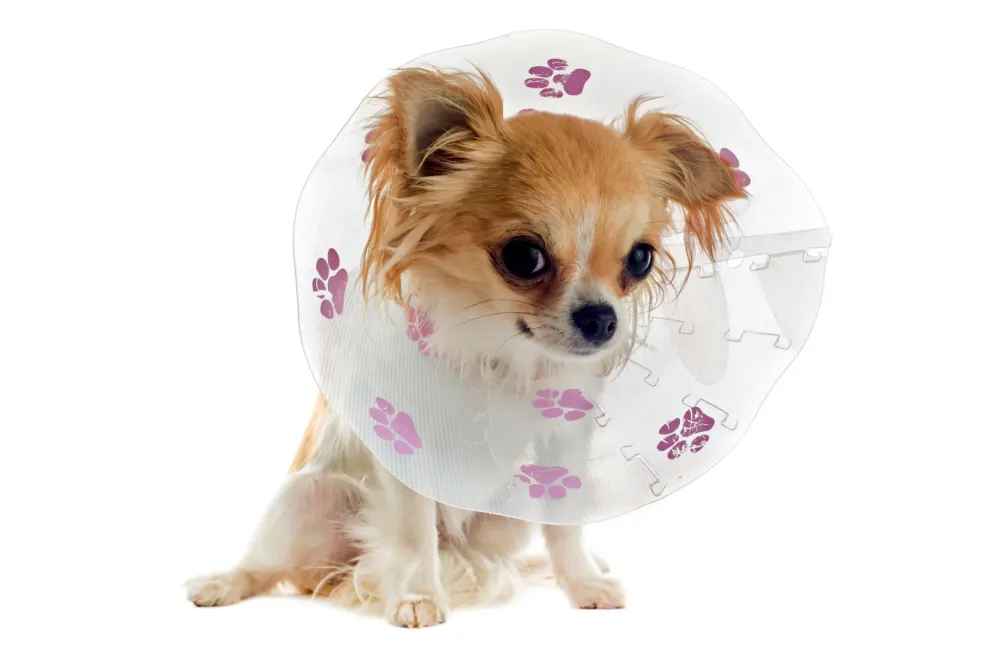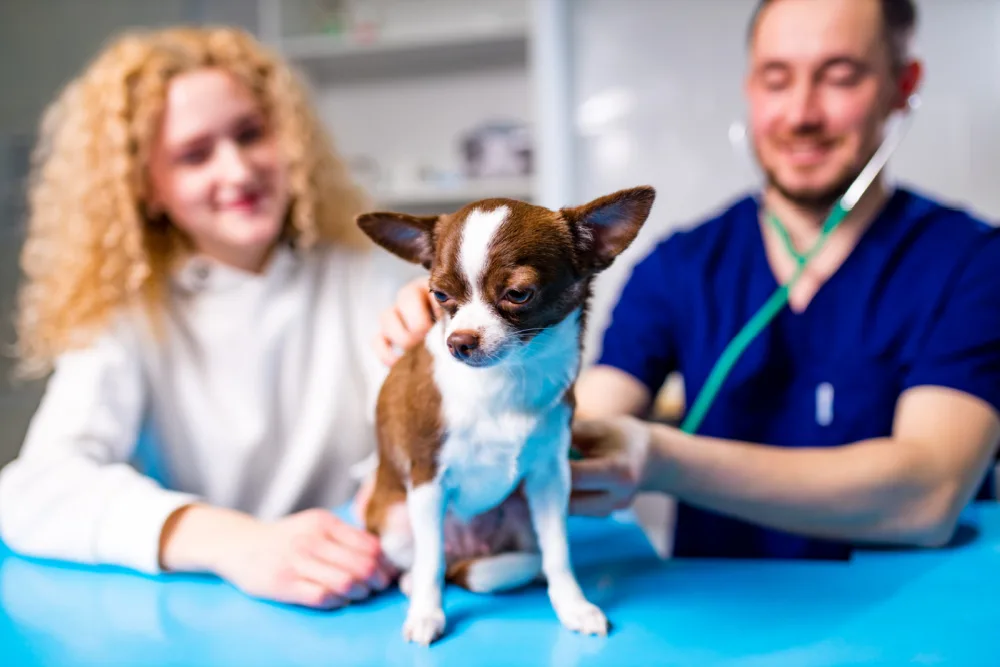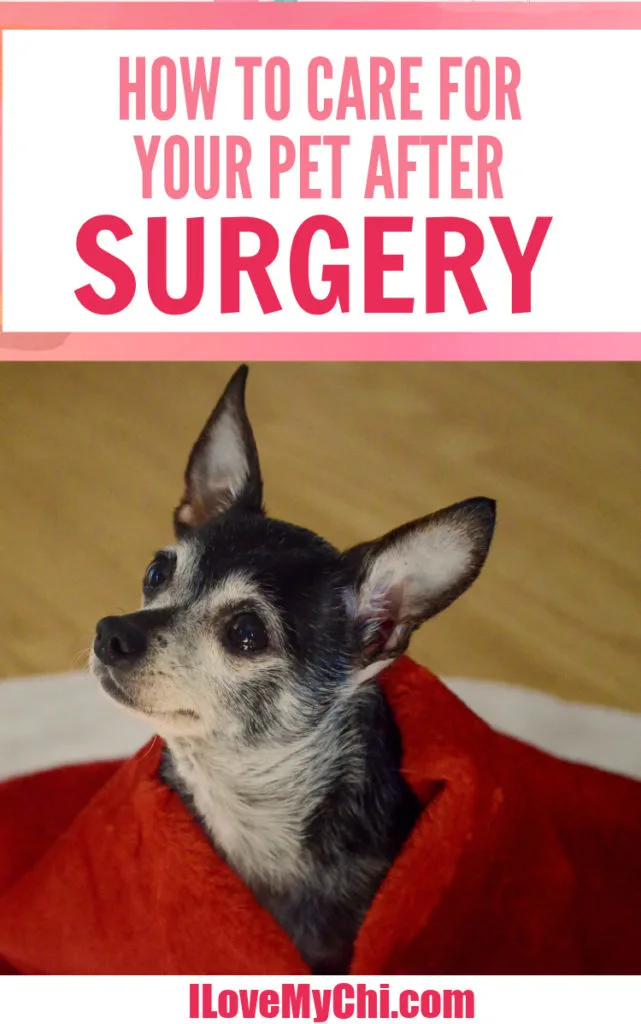Surgery can be stressful for humans, just as it can be for your pets. You can’t communicate to your four-legged friend and tell them what is going on, and you need to keep a close eye on them while they are recovering.
As well as the basics the day after the surgery, there are some long-term tips to make sure your dog heals after surgery.
Immediate Post-Surgery Care for Pets

Post-operatively, when your pet returns to you, they can seem out of sorts. They may not be themselves and they could be a bit disorientated. If you do have concerns about behavior then it is a good idea to discuss this with your vet, but don’t expect a dog or cat to be their usual self. Surgery is a big undertaking, and on top of that, they may be on medications that can make them sleepier than usual.
Ensure your pet is responsive and has access to a quiet space where they feel safe. It is likely that all they will want to do is curl up and sleep somewhere comfortable.
Immediately after surgery, your pet may ve sent home with a “cone of shame” as some people call it. It is imperative that you keep your pet away from any wounds. This is to stop them from licking it or trying to unpick any stitches. This could be a natural instinct for pets, so it is very important that you use some sort of collar or cone to keep them away.
Your vet should be able to supply this or you can purchase one at a local pet store.
Licking incisions can lead to infections or failure of the incision to heal.
Cathy’s Note: I got Ziggy this “cone of shame” just this week for his upcoming surgery because it’s more comfortable than the typical cone and it is quite cute too.
Post-Surgery Home Care for Pets
Much of the post-surgery home care is around observation. You need to make sure you keep a close eye on your pet and their behavior to ensure they are healing normally.
It is very important after surgery to monitor your pup closely. Not only are they recovering from a big procedure, but they may also be stressed from the ordeal and in discomfort. You may notice some changes after the procedure. While many of these are quite normal, we also want you to be on the lookout for some concerning signs.
Keeping your pet confined is also a good idea in a lot of scenarios. It makes it easier to keep an eye on them and makes sure they don’t injure themselves or disrupt their surgical site. You don’t want to let a cat roam where you can’t see them, or let a dog go for walks and runs that could open up wounds.
You need to always make sure you follow the vet’s instructions. Every surgery is slightly different, so you need to do as they request when it comes to keeping your pet in the best of health post-surgery. There may be steps you need to follow such as dressing a wound, though the vet will always tell you about these upon discharge.
On top of this, you may have to monitor medication. For example, your pet might need you to give them medication once a day. This is not like giving it to a human. Often, you will need to disguise the medication within food or a tasty treat.
You may also have to keep a very close eye on your pet’s diet. They may not need as much food, but they need to get adequate nutrition for proper healing.
Wound Monitoring
Many animals will have a surgical incision that is easy to see after surgery. The incision may or may not have sutures externally.
For the first 10—14 days after surgery, it is so important to check on the incision daily. Ensure there is only mild inflammation present.
You may see some slight bruising, but this should not get much worse over the first day or two.
The incision may have a light pink discharge at first but this typically will resolve after the first day.
Scabbing is a normal part of healing and the scabs should never be removed.
Swelling should gradually improve over a few days.
Concerning signs of infection include:
- Heat at the surgical site
- Progressive swelling
- Excessive redness
- Worsening pain
- Discharge from the site. Normal discharge is watery or slightly blood-tinged. Concerning discharge is yellow-green or whitish-pink in color.
- A foul odor
If you see any of these clinical signs it is important to call your vet right away as they may want to treat your pet with antibiotics.
Exercise Restriction
Keeping your pet calm and quiet is key to ensuring healing after surgery. Any excessive movement can cause pain and also tension in the incision.
Sudden bursts of activity, running, jumping, stairs, and rough-housing are discouraged. These activities can cause the sutures to break and the incision to open. This would be devastating to your pet and could require revision surgery.
We advise pet owners to keep their pets leashed outdoors and limit walks just for short potty breaks. In the home, pets should be kept in a small area. Couches, stairs, and human beds should be off-limits to jumping.
Bandages
Some surgeries require pets to go home with a bandage, especially orthopedic procedures. These bandages often need to stay on for several days.
It is VERY important that these bandages stay clean and dry.
If the bandage allows exposure of the toes, make sure they do not appear swollen each day.
Do not allow your pet to lick or chew the bandage.
When outdoors, the bandage should be covered to prevent it from getting wet. You can ask your vet for a bag to cover the bandage or even purchase a MediPaws ahead of time.
If the bandage becomes wet, slips down, comes off, or appears too tight, it must be removed immediately and replaced by a veterinarian. Leaving a wet or tight bandage in place can cause significant trauma to the skin underneath and the potential for pressure sores!
Appetite
It is very common for pets to have a finicky appetite after surgery. Right after the procedure, it is important to not feed a full meal.
We recommend letting pets get settled upon coming home. Offer a small amount of water. If this is tolerated you can feed a small meal.
Do not feed large meals right after surgery as this can lead to an upset stomach. As long as no signs of nausea are seen, you can feed your pet’s normal meal in the morning.
Any ongoing signs of nausea such as drooling, lack of appetite, vomiting, or diarrhea are not normal. You should contact your vet if these signs are seen.
Bowel Movements
It is very common for dogs who have had surgery to not have a normal bowel movement right away. Most pets are fasted before surgery and are given medications that can delay the movement of food through the gastrointestinal tract.
For this reason, it is very normal for a pet not to defecate for 2-3 days after surgery.
Do not worry too much unless your pet is straining to defecate and seems constipated. If this occurs, you should contact your vet.
Signs That You Need to Call Your Vet:
- No appetite for more than 24 hours after surgery
- Poorly controlled pain
- Vomiting or diarrhea after surgery
- Heat, swelling, or discharge from the surgical site
- Lack of bowel movement for more than 3 days
- Lethargy or abnormal behaviors more than 24 hours after surgery
- Any opening of the incision site
- A bandage that comes off, gets wet or is too tight
Follow-Up Appointment

Your vet should have given you an appointment to follow up after the surgery. This is important to keep to make sure your dog is healing normally. It depends on the surgery your dog has had, but this could be 4-6 weeks after the initial surgery. In the meantime, it is up to you to keep a close eye on your pet.
Keeping Your Pet Happy During Recovery
Your pet may be a bit less mobile, and they may not seem to be their usual self. How can you keep them happy as they recover?
Make sure your pet still gets to go outside. If you have a dog, you may have to take them out even if they can’t walk around on their own.
Do not take them for a walk any longer than they need to urinate or defecate. Always keep them on leash to prevent them from overexerting themselves.
Give your pet toys that aren’t too vigorous, but provide plenty of mental stimulation, and spend time with them whenever you can. If a pet is confined then they might end up suffering in their mental state, as they start out on the road to recovery.
![]()
Do you have any tips about caring for your dog after surgery? We’d love to hear your experience so share in the comments!


Paula Simons
DVM
This article has been reviewed, fact-checked, and approved by Dr. Paula Simons DVM. You can read more about her on our About page.


Cathy Kennedy
Saturday 15th of January 2022
Thank you for this precious newsletter...praying for very fast recovery for Little Ziggy!♥️
Cathy Kennedy
Wednesday 19th of January 2022
@Cathy,I bet Ziggy is realy cute! (:
Cathy
Saturday 15th of January 2022
You're welcome Cathy! Ziggy is okay, he's getting neutered on Thursday.